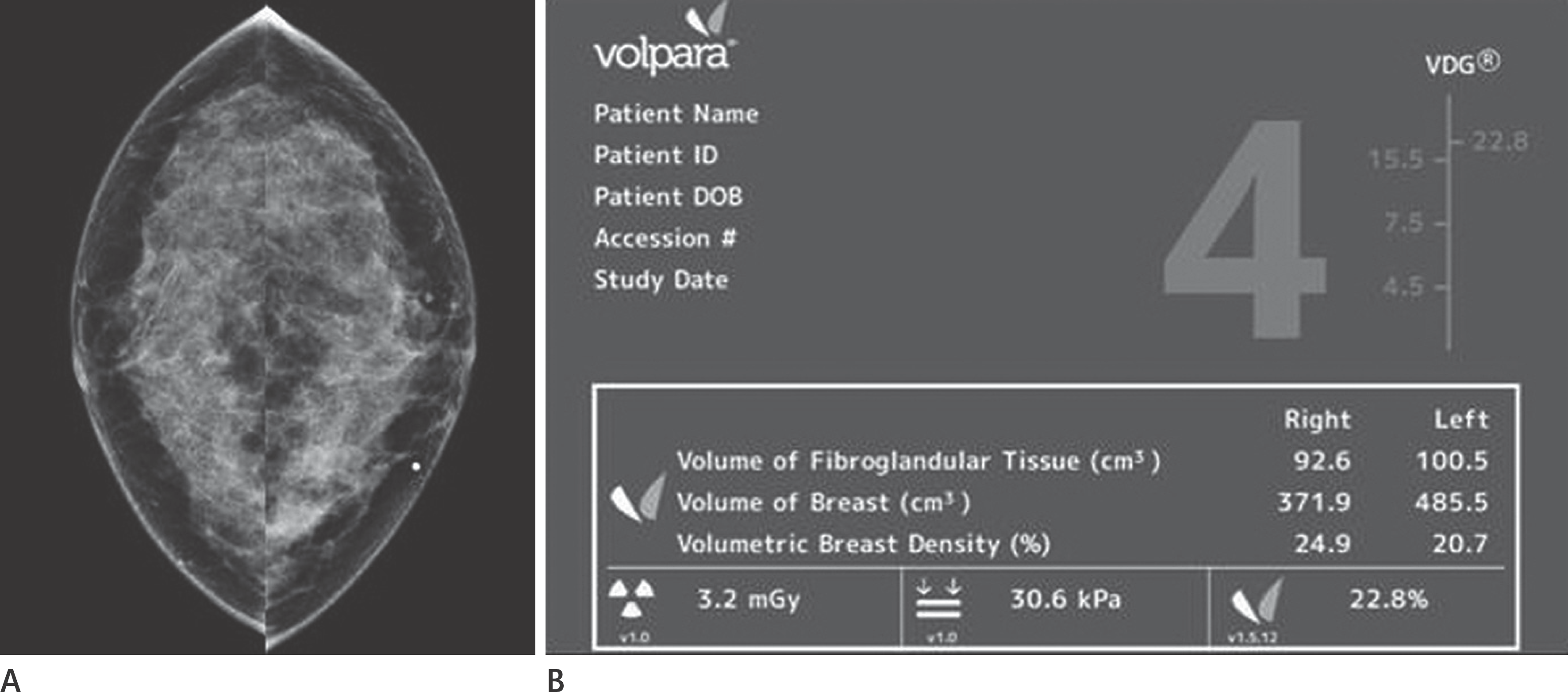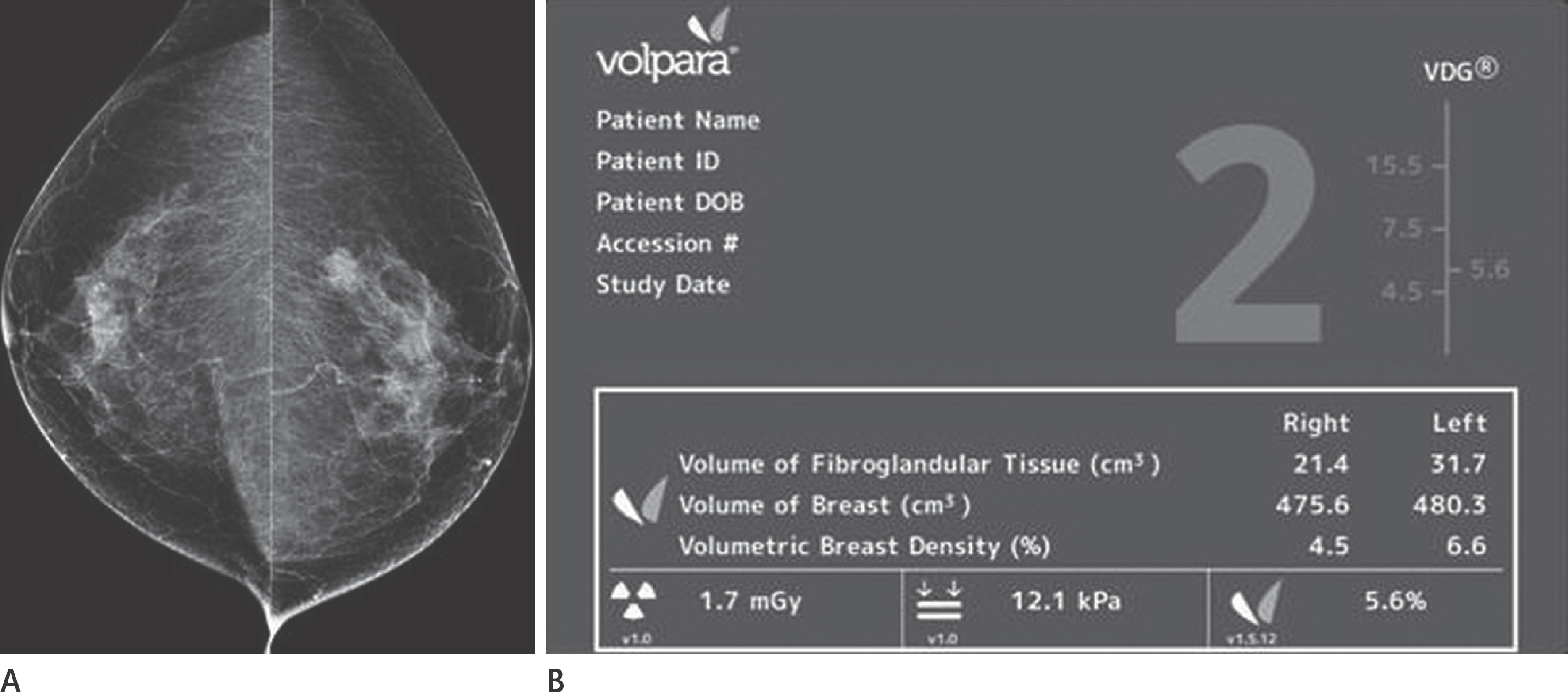1.Boyd NF., Guo H., Martin LJ., Sun L., Stone J., Fishell E, et al. Mammographic density and the risk and detection of breast cancer. N Engl J Med. 2007. 356:227–236.

2.McCormack VA., dos Santos Silva I. Breast density and parenchymal patterns as markers of breast cancer risk: a meta-analysis. Cancer Epidemiol Biomarkers Prev. 2006. 15:1159–1169.

3.Harvey JA., Bovbjerg VE. Quantitative assessment of mammographic breast density: relationship with breast cancer risk. Radiology. 2004. 230:29–41.

4.Harvey JA., Holm MK., Ranganath R., Guse PA., Trott EA., Hel-zner E. The effects of bazedoxifene on mammographic breast density in postmenopausal women with osteoporosis. Meno-pause. 2009. 16:1193–1196.

5.Cuzick J., Warwick J., Pinney E., Duffy SW., Cawthorn S., Howell A, et al. Tamoxifen-induced reduction in mammographic density and breast cancer risk reduction: a nested case-control study. J Natl Cancer Inst. 2011. 103:744–752.

6.Harvey JA., Bovbjerg VE., Smolkin ME., Williams MB., Petroni GR. Evaluating hormone therapy-associated increases in breast density comparison between reported and simultaneous assignment of BI-RADS categories, visual assessment, and quantitative analysis. Acad Radiol. 2005. 12:853–862.
7.Kolb TM., Lichy J., Newhouse JH. Comparison of the performance of screening mammography, physical examination, and breast US and evaluation of factors that influence them: an analysis of 27,825 patient evaluations. Radiology. 2002. 225:165–175.

8.Pinsky RW., Helvie MA. Mammographic breast density: effect on imaging and breast cancer risk. J Natl Compr Canc Netw. 2010. 8:1157–1164. quiz 1165.

9.American College of Radiology. Breast Imaging Reporting and Data System (BI-RADS). 4th ed.Reston, VA: American College of Radiology;2003.
10.Byng JW., Yaffe MJ., Jong RA., Shumak RS., Lockwood GA., Tritchler DL, et al. Analysis of mammographic density and breast cancer risk from digitized mammograms. Radio-graphics. 1998. 18:1587–1598.

11.Zhou C., Chan HP., Petrick N., Helvie MA., Goodsitt MM., Sahin-er B, et al. Computerized image analysis: estimation of breast density on mammograms. Med Phys. 2001. 28:1056–1069.

12.Chang YH., Wang XH., Hardesty LA., Chang TS., Poller WR., Good WF, et al. Computerized assessment of tissue composition on digitized mammograms. Acad Radiol. 2002. 9:899–905.

13.Ng KH., Lau S. Vision 20/20: mammographic breast density and its clinical applications. Med Phys. 2015. 42:7059–7077.

14.Destounis S., Johnston L., Highnam R., Arieno A., Morgan R., Chan A. Using volumetric breast density to quantify the potential masking risk of mammographic density. AJR Am J Roentgenol. 2017. 208:222–227.

15.Leong SP., Shen ZZ., Liu TJ., Agarwal G., Tajima T., Paik NS, et al. Is breast cancer the same disease in Asian and Western countries? World J Surg. 2010. 34:2308–2324.

16.Boyd N., Martin L., Stone J., Little L., Minkin S., Yaffe M. A lon-gitudinal study of the effects of menopause on mammographic features. Cancer Epidemiol Biomarkers Prev. 2002. 11:1048–1053.
17.Choppin SB., Wheat JS., Gee M., Goyal A. The accuracy of breast volume measurement methods: a systematic review. Breast. 2016. 28:121–129.

18.Kovacs L., Eder M., Hollweck R., Zimmermann A., Settles M., Schneider A, et al. Comparison between breast volume measurement using 3D surface imaging and classical techniques. Breast. 2007. 16:137–145.

19.Veitch D., Burford K., Dench P., Dean N., Griffin P. Measurement of breast volume using body scan technology (computer-aided anthropometry). Work. 2012. 41(Suppl 1):4038–4045.

20.Teo I., Whelehan P., Macaskill JE., Vinnicombe S., Munnoch DA., Evans A. VolparaTM as a measurement tool for breast volume. J Plast Reconstr Aesthet Surg. 2016. 69:581–582.






 PDF
PDF ePub
ePub Citation
Citation Print
Print


 XML Download
XML Download